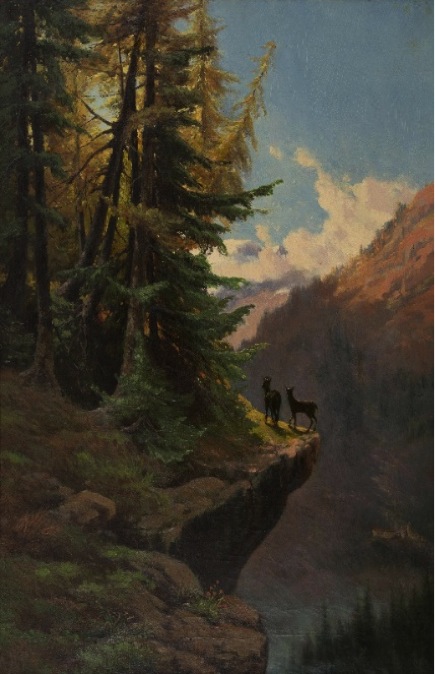
Gola di Gondo, 1880. Federico Ashton
Le Gole di Gondo da locus horridus a playground alpino
Le Gole erano il locus horridus dell’attraversamento delle Alpi lungo la via del Sempione; un passaggio topico per molti secoli, stante la complessità e la difficoltà del tracciato che tanto hanno concorso ai richiami e alle sottolineature contrastanti dei molti viaggiatori del Grand Tour che sceglievano questa via di accesso all’Italia, al Bel Paese. Parole di sgomento, sorpresa, paura, ma anche di coinvolgimento emotivo e/o di entusiasmo per i caratteri paesistici e naturalistici accompagnano le pagine diaristiche dei viaggiatori che spesso anticipano l’elogio del pittoresco e del sublime. Tra i tanti, Lord Byron è colpito dall’asperità del paesaggio: «Il diavolo deve avere certamente messo la mano (o lo zoccolo) tra certe rupi e certi burroni tra le quali e sopra i quali passa la strada>>; o Charles Dickens: «A poco a poco il frastuono delle acque divenne più forte e la stupenda strada, dopo aver traversato il torrente su di un ponte, penetrò tra due muri massicci di rocce perpendicolari che ci tolsero completamente la luce della luna e ci lasciarono solo la vista di alcune stelle. Poi perdemmo anche queste nella profonda oscurità di una caverna della roccia …».
Con un salto temporale veniamo all’oggi, da locus horridus siamo passati ad un grande playground alpino.
Le strapiombanti pareti delle Pale di Gondo sono diventate, con la prima via aperta nel 1977 dalle guide Paleari e Rossi (3 giorni di scalata mista libera e artificiale su trecento metri di parete strapiombante, poi diventata “La Sentinella”), un grande proscenio dell’arrampicata estrema.
La Stockalperweg, la mulattiera voluta nel 1600 dal barone Kaspar Stockalper per agevolare gli scambi commerciali tra nord e sud Europa attraverso il Passo del Sempione è diventata un trekking di due giorni che collega Gondo, sul confine Italo-Svizzero, a Briga nell'alto Vallese. Mentre l’insieme delle vallate del Sempione sono sempre più meta per salite alpinistiche, scialpinistiche ed escursionistiche.
Gondo Gorge, 1880. Federico Ashton
The Gondo Gorge: from Locus Horridus (Fearful Place) to Alpine Playground
The Gorges were the locus horridus (fearful place) of crossing the Alps along the Simplon route; a topical passage for many centuries, given the complexity and difficulty of the trail which contributed so much to the conflicting references and impressions of the many travellers on the Grand Tour who chose this route to access Italy, the Bel Paese (Beautiful Country). Words of dismay, surprise, fear, but also of emotional involvement and/or enthusiasm for the landscape and natural features accompanied the diary pages of travellers, who often anticipated the praise of the picturesque and the sublime. Among the many, Lord Byron was struck by the harshness of the landscape: «The devil must certainly have placed his hand (or his hoof) between certain cliffs and certain ravines among which and over which the road passes>>; or Charles Dickens: «Gradually, the roar of the waters became louder and the spectacular road, after having crossed the stream on a bridge, cut between two massive walls of perpendicular rock which completely shut out the light of the moon and left us just the view of some stars. Then, we also lost those to the pitch blackness of a rock cavern..."
With a leap in time, we come to today, from locus horridus (fearful place), we have moved on to an extensive alpine playground.
The overhanging walls of the Pale di Gondo (Cliffs of Gondo) have become, with the first route opened in 1977 by the guides Paleari and Rossi (3 days of mixed free and artificial climbing on three hundred metres of overhanging wall, which later became "La Sentinella" (The Guard) ), a great scenario of extreme climbing.
The Stockalperweg, the mule track built in 1600 by Baron Kaspar Stockalper to facilitate trade between northern and southern Europe via the Simplon Pass, has become a two-day trek that connects Gondo, on the Italian-Swiss border, to Brig in the upper Valais. Meanwhile, the Simplon valleys as a whole are ever more a destination for mountaineering, ski mountaineering and hiking enthusiasts.

